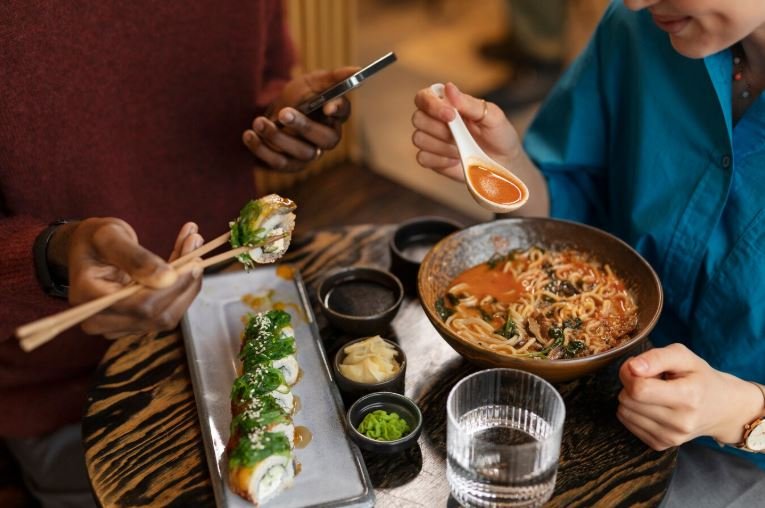Minimalism is more than just an aesthetic choice—it’s a lifestyle that emphasizes simplicity and functionality. In the realm of kitchen design, this translates to creating spaces that are both visually calm and highly efficient. The minimalist kitchen strips away the superfluous, focusing on essential elements that blend form and function seamlessly. This design philosophy not only enhances the kitchen’s look but also improves its usability, making every action smoother and every tool more accessible.
Minimalist Kitchen Design
When embarking on creating a minimalist kitchen, the goal is to keep the space uncluttered, clean, and refined. This involves thoughtful consideration of every piece that enters the space, from appliances to decorations. The minimalist approach often involves using monochromatic or muted color schemes, streamlined cabinetry, and a layout that prioritizes movement and clarity. By choosing quality over quantity, homeowners can create a kitchen that not only looks modern and sleek but is also a joy to use.
As per Sheiner Construction, “The appeal of minimalist kitchens lies in their unpretentious, no-frills approach that can stand the test of time. These kitchens are not just about being trendy; they’re about crafting an environment that fosters tranquility and order. This introduction sets the stage for understanding how minimalism can transform the heart of the home into a serene yet functional space. Even for small kitchen designs, minimalist is the new trend.”
The Philosophy of Minimalism in Home Decor
Minimalism in home decor is rooted in the idea of reducing excess to enhance the quality of life. This philosophy extends beyond mere aesthetics, embodying a commitment to intentional living. By minimizing clutter and distractions, homeowners can focus more on quality interactions and experiences within their living spaces. In the context of kitchen design, this philosophy translates into an environment where every object and feature serves a purpose, supporting daily routines rather than complicating them.
Adopting minimalism in the kitchen does not simply mean having fewer items; it involves a deeper consideration of functionality and the elimination of unnecessary elements. This approach encourages homeowners to think critically about what they really need, which often leads to a more mindful way of living. For instance, instead of filling drawers with seldom-used gadgets, minimalists would opt for multifunctional tools that perform multiple tasks, thus saving space and reducing clutter.
Moreover, the minimalist philosophy is also about space management and the flow within the space. A well-designed minimalist kitchen enhances movement and efficiency, making cooking and cleaning tasks more enjoyable. The layout is typically open and airy, with clear lines of sight and easy access to essentials. This thoughtful arrangement not only makes the kitchen more user-friendly but also turns it into a peaceful retreat within the home.
Key Elements of a Minimalist Kitchen
Creating a minimalist kitchen revolves around several key elements that define its functionality and aesthetic. These elements are carefully chosen to ensure that the space remains practical while embodying minimalist principles. Here’s a breakdown of the crucial components:
1. Simplicity in Design
The design of a minimalist kitchen is characterized by clean lines and a lack of ornamentation. Cabinets often feature flat-panel doors without elaborate designs, and hardware is kept subtle or sometimes eliminated entirely in favor of touch-open doors. The overall layout emphasizes straight lines and rectangular forms, creating a sleek and tidy appearance.
2. Neutral Color Palette
A minimalist kitchen typically utilizes a neutral color palette, featuring shades of white, gray, or other muted tones. These colors help create a calm and uncluttered visual experience. They not only enhance the sense of space but also serve as a perfect backdrop for the functional aspects of the kitchen to stand out.
3. Quality Over Quantity
In minimalist kitchens, the focus is on the quality of materials and appliances rather than quantity. Durable materials such as stainless steel, stone, and solid wood are preferred for their longevity and ability to maintain a clean look. Choosing high-quality items also means that they tend to have a timeless appeal, reducing the need for frequent updates.
4. Open Space and Functional Layout
An open floor plan is often employed in minimalist kitchens to enhance the feeling of spaciousness. The arrangement of the kitchen is meticulously planned to optimize workflow, with the placement of appliances and counters designed to facilitate easy movement and access. This functional layout is critical in maintaining an uncluttered and efficient kitchen environment.
5. Integrated Appliances and Fixtures
To maintain a streamlined look, many minimalist kitchens feature integrated appliances that blend into the cabinetry. This includes refrigerators, dishwashers, and ovens that are covered with paneling that matches the rest of the kitchen. Sinks and cooktops are often under-mounted or flush-mounted to minimize visual interruptions on the surfaces.
6. Minimal Decor
Decor in a minimalist kitchen is kept to a bare minimum. Decorative elements are chosen for their simplicity and are used sparingly to maintain a focus on functionality. Often, a single piece of bold artwork or a few carefully selected items like a vase or a bowl of fresh fruit can be enough to add personality without overwhelming the space.
By focusing on these key elements, a minimalist kitchen can achieve both beauty and practicality, making it a joy to use and a tranquil place to be. Each choice is intentional, contributing to a cohesive and serene environment that stands as the epitome of minimalist design.
Choosing the Right Colors and Materials
Selecting the appropriate colors and materials is crucial in crafting a minimalist kitchen that is not only functional but also visually appealing. These elements play a significant role in setting the tone and atmosphere of the space. Here’s how to make the best choices:
1. Color Choices
The minimalist palette typically includes neutral and monochromatic shades, which help to create a serene and cohesive look. White is a popular choice because it reflects light and can make the kitchen appear larger and brighter. However, soft greys, beiges, or even matte black can also be used to great effect for those looking for something a little different. These colors are not only timeless but also provide a perfect backdrop for highlighting the kitchen’s architectural features and finer details.
2. Material Selection
In a minimalist kitchen, the materials need to be as functional as they are beautiful. Natural materials like wood, stone, and metal are favorites for their texture and durability. For countertops, quartz or granite offer a sleek look while being highly resistant to scratches and stains. Stainless steel appliances integrate well into these kitchens due to their clean lines and long-lasting nature.
Flooring should also be considered with care. Polished concrete, hardwood, or large-format tiles are excellent choices that are in line with minimalist design principles. They are easy to clean, durable, and maintain a seamless flow throughout the space.
3. Textures and Finishes
While the colors may be simple, playing with textures and finishes can add depth and interest to a minimalist kitchen. Matte finishes are particularly popular because they do not show fingerprints and smudges, thus helping to keep the appearance neat and tidy. Glossy finishes, on the other hand, can help to brighten the space by reflecting light.
Cabinetry finishes in a minimalist kitchen should be smooth and free of excessive detail. Handleless cabinets are a common feature, enhancing the clean lines and uncluttered feel of the space. The texture can also be introduced through backsplashes or feature walls using materials like tile or stone.
4. Sustainability Considerations
More homeowners are now considering the environmental impact of their material choices. Opting for sustainably sourced materials or those with a low environmental footprint, like recycled glass or bamboo, can add an additional layer of value to the minimalist kitchen.
5. Consistency is Key
To truly embody minimalism, it’s important to maintain consistency in both color and material choices throughout the kitchen. This consistency helps to unify the space and reinforces the minimalist ethos of simplicity and restraint.
By thoughtfully selecting colors and materials, you can ensure that your minimalist kitchen is not only a reflection of your personal style but also a functional, enduring space. The right choices can transform a simple kitchen into a tranquil, luxurious environment that enhances daily life.







